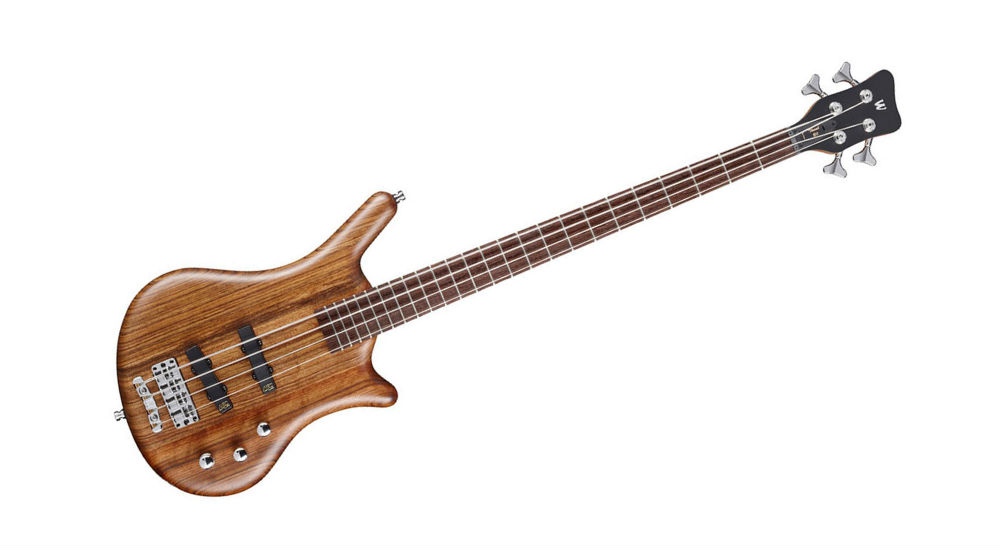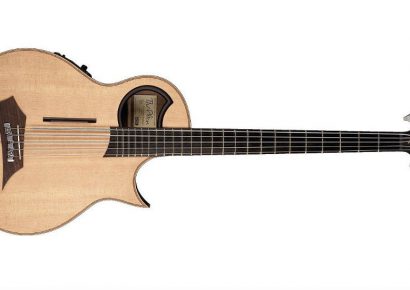The body itself is curved to sit nicely against your body, but is also balanced and fairly lightweight for standing and playing for long periods of time. The neck feels great, and even at speed is no issue. The string spacing is really well set out, making it easy to fret licks, but not difficult to really hold down those lower stringed and fretted chords and notes. The bass features dual MEC pickups, a favourite of Warwick basses specifically and bass players the world over. There’s some push/pull options and pickup switching for tone shaping – just a few of the features that tie this bass together.
Top to bottom, this bass is really well designed and constructed. It’s masterfully built. Beginning with the angled Warwick machine heads, the strings are supported by a Just-A-Nut III as they sail over the easy access truss rod cover – you won’t need a screwdriver to adjust the truss, and the bass comes with Hex keys to fit both the truss rod and two-piece Warwick bridge. The fingerboard is Wenge, a common wood for basses and extended range guitars known for its hardness. This provides a more solid sound both acoustically and amplified, and assists in keeping everything solid and straight throughout the guitar despite the large amount of tension from such heavy gauge strings. The body and neck are made from Ovangkol, a wood similar to rosewood in tonal characteristics, but with a more full mid range, so it’s perfect for bass. The top-level components and electronics begin to explain why Warwick basses sit at the price points that they do. The MEC electronics are active and feature a push/pull volume, a blend switch between the two pickups and a combo treble/bass tone knob. Everything is laid out practically along this 24 fret 34” long scale bass.
The bass amplifies really well, even with just a DI. The middle pickup is articulate and warm, while the bridge pickup remains big and solid. A combination of the two with the blend knob and you can achieve a pleasantly honky Motown bop, or a little more of either depending where you fit into the mix in your music. The bass plays well and responds dynamically, but also produces a balanced, compressed sound without feeling (literally) limited or squashed. Glow-in-the-dark side dots are a welcome addition to a bass that is mostly the same colour, and I can imagine it might be difficult to navigate the fretboard onstage without them. Beyond praise, there’s not much more the say about the Warwick. The included User Kit offers some tools and a cleaning cloth, as well as the Starline Rockbag, a solid and well put-together heavy duty gig bag, to keep your Thumb safe when transporting it.
Ultimately, the Warwick Thumb is a great bass for players of most levels. With the exception of beginners who might be excluded due to the Thumb’s price point, the Warwick would be a great investment for anyone. It’ll be your workhorse bass, but also your pride and joy. It could be your dedicated studio bass, either for a musician or producer, due to its great balanced sound, tone-shaping capabilities and phenomenal tuning stability. Thanks to the active MEC electronics, meticulously selected tone woods and fingerboard, top quality hardware and a flawless design, Warwick have somehow improved on a classic. The Thumb literally won’t weigh you down, because of a very balanced build, nor will you let it out of your sight thanks to the glowing fret markers. The Thumb might not be your next bass, but I would advise settings your sights on one.

